Murray’s innovative footprint on sailing
Published on July 9th, 2023
Australian Iain Murray AM, at 65 years of age, is most recently known as the Regatta Director for the America’s Cup and SailGP. But he got to this position as a competitor rooted in high performance sailing, which for an Aussie is the 18-foot skiff class.
Here is that story as told by Frank Quealey of the Australian 18 Footers League:
When Iain Murray graduated from the Cherub and 12ft skiff classes to join the 18 footer ranks as a 17-year-old in the 1976-77 season, with the sponsorship support of local TV station Channel 7 for his self-designed and built Color 7 skiff, nobody could have predicted the enormous influence he would have on the class, and the world of sailing, over the next 47 years – and still going strong.
Iain’s pathway to the 18s in the 1970s, as an Inter-dominion 12ft skiff champion, was standard for that time and coincided with the plans of keen sailor and General Manager of ATN Channel 7, Mr Ted Thomas, for his station to become involved in sailing.
The discerning Mr. Thomas saw Iain’s potential and the pair formed a sailing ‘partnership’ which amassed an incredible 13 JJ Giltinan World 18-footer Championship victories as well as an Open World Championship, 11 Australian championships and numerous other major championships in the class for Iain and the Seven Network.
Over the past two seasons, Iain has added two more JJ Giltinan titles to his record, as Team Manager for the Winning family’s Andoo company 18ft skiff team.
Iain had already achieved success with victories in both the 1973 Australian Cherub Championship and 1975-76 Interdominion 12ft skiff Championship, in boats he designed and built, so it was no surprise when his first 18ft skiff was also self-designed and built for the 1976-77 season.
With a lightweight crew, Ian Souter and Shane Corbett, Iain designed a beamy moulded plywood hull to maximise leverage but after finishing only fifth in the Australian Championship he made some drastic changes before it was shipped to Auckland, New Zealand for the 1977 World Championship.
These would include a skinnier bow and topsides, rebuilt remarkably within a week.
It was a closely-fought five-race series with a dramatic finale, which was sailed in a 30 knot easterly, big seas and the wind against the tide.
Going into the race, David Porter’s KB and Murray’s Color 7 were level on 14 points, although KB held a two-point advantage after each team discarded its worst performance in the four races of the regatta sailed to that point.-
The critical moment in the historical race, to determine the overall championship winner, came when the eight boats still left on the course reached the final rounding mark.
KB rounded the buoy in a clear second place and the fleet only had a twomile run across the harbour back to the finish line off Orakei Wharf. It appeared that the title would belong to KB.
Color 7 was more than five minutes behind KB at Rough Rock. Murray and his team had to do something radically different or their chance of victory was gone.
Due to the conditions, all leading teams elected to head in a south-easterly direction before gybing and running to the finish, but KB got carried a long way up to weather before she finally managed to grannie tack, and head for the finish line.
In dramatic style, Murray’s Color 7 was the only boat in the fleet to set and carry a spinnaker on the run to the finish line. With greater speed and direction, Color 7 established the decisive three-boat margin necessary to win the race and snatch the prestigious title
Russell Bowler’s Benson & Hedges, which finished third in the championship, impressed the Australian teams with her hull construction, which pioneered a polystyrene core sandwiched by a thin fibreglass laminate that was reportedly one-third lighter than the New Zealand plywood boats.
Iain Murray’s thoroughness, preparation and attention to detail were evident when he dismissed polystyrene foam altogether as the core for his new Color 7 (1977-78) hull, electing to use a Nomex honeycomb paper core sandwiched by layers of Kevlar, rather than Klegecell. This was to achieve greater stiffness and lighter weight.
In collaboration with emerging Australian boat builder John McConaghy, Iain developed a revolutionary hull laminated from a female mould to accommodate the use of the aerospace materials that had never previously been used in boat construction.
This resulted from Murray’s request of Channel 7 to support his investigating the use of aerospace materials. They responded with airfares to California. Their first stop was NASA.
For the launch of his evolutionary boat, Iain introduced two “newbies”, Andrew Buckland on the sheet and Don Buckley in the bow. Predictably, the boat was faster than anything Murray had ever sailed and, despite a flurry of capsizes, the new crew were able to capitalise on the new boat’s speed to win.
The 1978 World Championship on Waterloo Bay, Brisbane once again produced an incredible contest between Murray’s Color 7 and Porter’s KB. Both teams finished the scheduled races of the regatta in an unbreakable tie on points and went into a sail-off to determine the champion.
KB led for most of the course but, in an era when there were no restrictions on sail type, the Color 7 team introduced a brand new smaller half-ounce spinnaker that helped them to take the lead and hold for the rest of the race.
Iain Murray had retained the title he won in Auckland in 1977.
Keen to encourage a burgeoning fleet in the UK, the Australian 18 Footers League administrators supported an Open World Championship at Plymouth. The Color 7 team led the Australian group and won the regatta from New Zealand, UK and French teams.
Back in Australia, the 1979 World Championship on Sydney Harbour was the on-water highlight of the 1970s.
In the lead up to the regatta, championship sponsor Channel 7 TV network aired regular promotional clips, which generated intense public interest. Huge crowds followed the racing, with packed vantage points around the harbour foreshores, while hundreds of boats full of spectators followed every minute of the action.
There were so many spectators at Bradleys Head that park rangers were forced to close the approach road. It was estimated that 10,000 people followed the weekend races.
Unlike the previous two Murray/Color 7 worlds’ victories, the Color 7 team had an unbeatable lead after the first six races of the seven-race 1979 regatta.
The level of the success associated with the Color 7 team led to an arrangement whereby Murray, Buckley and Buckland produced a number of boats for other competitors and sponsors. Iain’s hull design, Don’s rigging and Andrew’s sails.
After winning the Australian Championship in Perth where the ‘wings’ concept was introduced for the first time (although John Winning and Stephen Kulmar had previously used small extensions to their hulls), the Australian teams were back in Auckland for the 1980 World Championship.
Despite the Color 7 team being far from dominant, consistency over the seven races gave the team another victory.
Back on Waterloo Bay, Brisbane in 1981, the Color 7 team was at its awesome best as it totally dominated a 30-boat fleet from New Zealand, USA, UK and five Australian States and Territories to win all seven races of the championship.
Iain won his sixth consecutive World Championship (Andrew and Don their fifth) on Sydney Harbour after a ‘tight’ contest which produced four different winners from the seven-race regatta. It was also announced during the championship that the team was retiring from the 18s at the end of the season. At the age of 23, Iain had decided to pursue the America’s Cup.
Murray and his remarkable “pair of newcomers in the 18-footer class” became the most winning combination ever in the 131-year history of the 18-Footer class. In the five seasons they were together, from the 1977-78 to 1981-82 season inclusive, Iain Murray, Andrew Buckland and Don Buckley won every World, Australian and NSW Championship. Iain Murray winning six straight championships including his 1976-77 victory.
Both records still stand.
Iain’s success in the 18ft skiffs led to Syd Fischer selecting him as helmsman of his 1983 America’s Cup challenger, Advance. Murray later joined with Kevin Parry’s Kookaburra syndicate, which earned the right to defend the Cup in 1987, in the Kookaburra boats of his own design.
He also led the Spirit of Australia Challenge for the 1992 Challenger Series
By the mid-1980s there was a variety of new designs. Most notably Rob Brown’s highly successful Bradmill/Entrad with the ‘hollow’ design and Julian Bethwaite’s 2-handed Prime Computer concept, but despite the competition, the Murray design remained at the top of the fleet and ended the decade with four World Championship victories between 1987 and 1990.
The Murray-designed 1987 champion Chesty Bond hull, which Trevor Barnabas sailed successfully in Perth, returned as Prudential in 1989 and won all seven races at the worlds for Michael Walsh.
Falling fleet numbers, associated with rising costs of competition in the 18s during the 1980s-early 1990s, led Australian 18 Footers League administrators to believe that a totally new concept was necessary to re-generate interest both locally, and at an international level.
They were determined to rationalize the cost and introduced a new set of rules for future 18-foooter competition. The basis of the new rules was a ‘one design’ hull and included a reduction in the number of rigs, and sails, that each boat could use each season.
Iain Murray was also responsible with the design of a suitable hull for the Australian 18 Footers League, which came into competition during the 1993-94 season.
With his long-established reputation as a technical innovator, Iain Murray was invited to design a new boat for the new rules in time for 1993-94 season and it is still the base of the current Australian 18 Footers League boats.
In 2006, at the request of Channel 7’s David Leckie and Saul Shtein, Iain put together a new, young crew. Another Channel 7-sponsored skiff was back in the 18 footer fleet. The team consisted of Seve Jarvin (skipper), Robert Bell (sheet) and Sam Newton (bow), racing under the name of Gotta Love It 7, this time with Iain Murray as Team Manager.
Gotta Love It 7 was runner-up to four-time JJ Giltinan World 18-footer champion Michael Coxon (Fiat) in 2007 but the following season reversed the result by defeating Coxon’s Fiat team in a hard-fought regatta.
The 2008 champion boat finished in third place in 2009, but it was the last time the team would taste defeat in the JJ Giltinan championship for six years as Gotta Love It 7 won the next five years in a row.
During the period, Seve Jarvin and Sam Newton remained a constant in the team, although Newton missed the 2013 victory as he was competing in the America’s Cup. Other successful crew included Scott Babbage (five times), Tom Clout and Peter Harris.
The Gotta Love It 7 team retired from the 18s after the 2016 championship.
Iain’s commitment with the America’s Cup restricted his involvement with the 18s, but he was back where he left off in 2022 when, under his guidance, Seve Jarvin (skipper), Sam Newton (bow) and Matt Stenta (sheet) won seven of the nine races, and finished second in the other two races, to take out the Giltinan Championship in the Andoo-sponsored skiff, for the Winning family.
Earlier this year, it was “a sweet quinella” for Iain as 18-footer Team Manager of Andoo, on the back of AndooComanche’s Line Honours victory in the 2022 Sydney-Hobart Race, with John Winning Jr stepping back into Andoo, with Seve and Sam, to take the 2023 JJ Giltnam 18-footer Championship.
A natural sailor and leader in every aspect of the sport, as a competitor, designer, team-builder, regatta director and mentor, Iain Murray AM has continued one of the legendary winning streaks in the sport to this day.
At a time when many might be thinking about putting their feet up, Iain has found time to be the Regatta Director for the upcoming, as well as last three America’s Cups, and all four SailGP seasons from 2018. In between, he co-coached the Australian Olympic 470 team to victory, and became Etchells World Champion (for the second time) in 2019.
Murray has effectively conquered 27 Sydney to Hobart Yacht Races, with four overall victories, including one as a designer, builder and skipper of Bumblebee 5 in 2001. He also had a 15-year stint with super maxi Wild Oats X1, which delivered nine Line Honours victories.
In between, there were boat designs such as the Nippa dinghy, classic motorboats Oscar and Cambria 11, the Sydney series and the Magic 25.
Murray’s boat designs are increasingly influenced by the 18-footer skiff that is so much part of his DNA, a class he says “that, from its inception, invited innovation, risk management, commercial sponsorship, stadium racing and the quest for speed.”
Recent collaboration with sail maker/sailor Richard Allanson under the emerging AM brand provided skiff-inspired amendments to the Etchells class that have now been universally embraced.
Even more excitingly, a brand-new class from AM soon to be launched will see his strongest ever inspiration drawn from the 18-footer, in a design that may well be the ultimate in Murray’s personal fleet of designs.
Unfortunately, Mr. Thomas is not presently well enough to comment, but he must be very proud of his decision made 47 years ago and the wonderful partnership he has had with Iain throughout his illustrious international sailing and management career.
Iain certainly appreciates Ted Thomas, “he had the foresight to support and mentor a young man that continues today after nearly 50 years.”
“He has been a visionary in his world and an incredibly insightful person, I can’t thank him enough for steering and supporting me.”
For the man affectionately called the Big Fella, the skiff-led dreams keep coming and the innovative footprint on sailing, first made so long ago, just keep getting bigger.


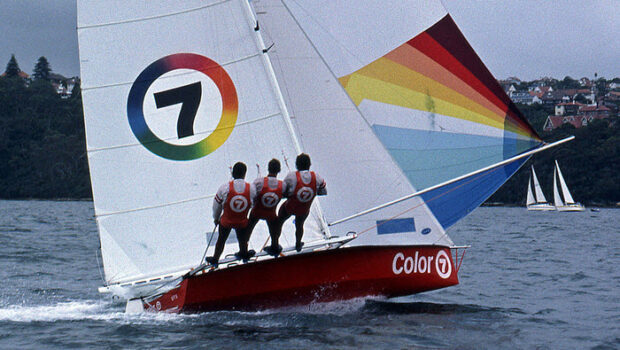
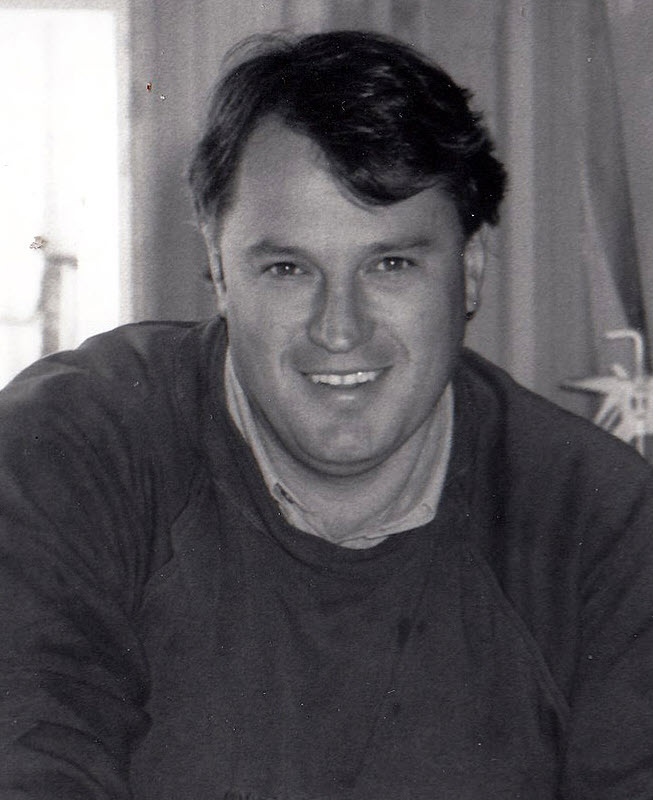


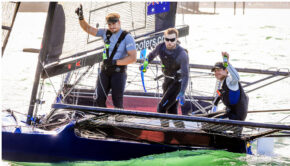
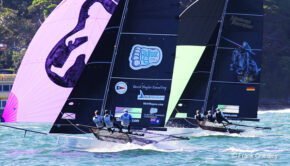
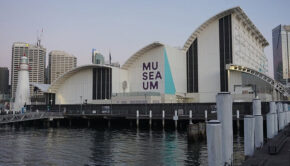
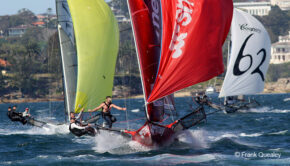
 We’ll keep your information safe.
We’ll keep your information safe.